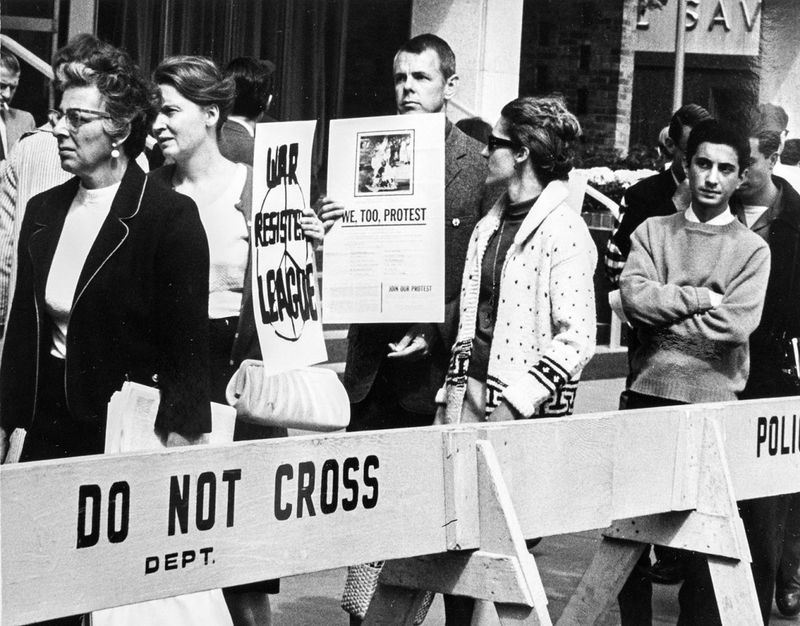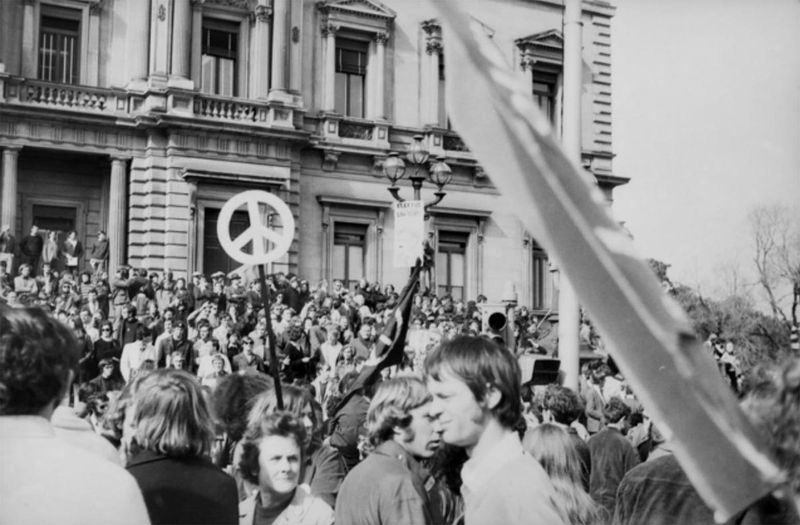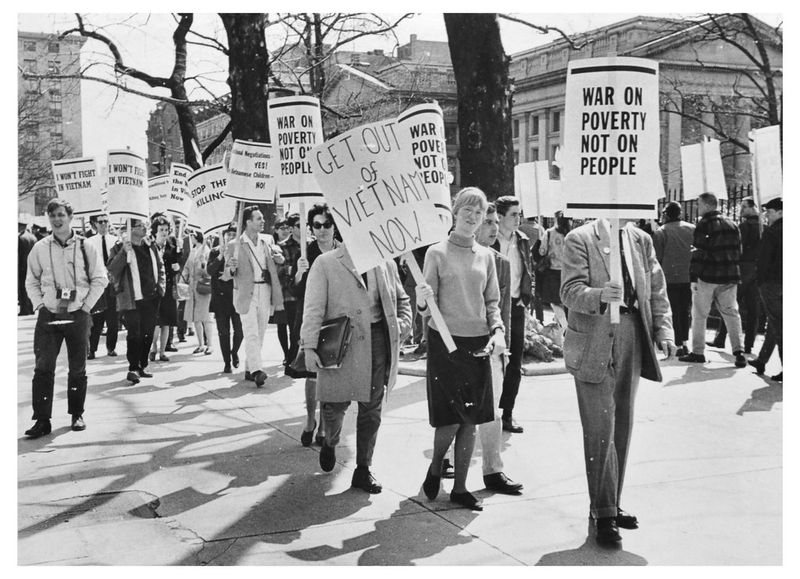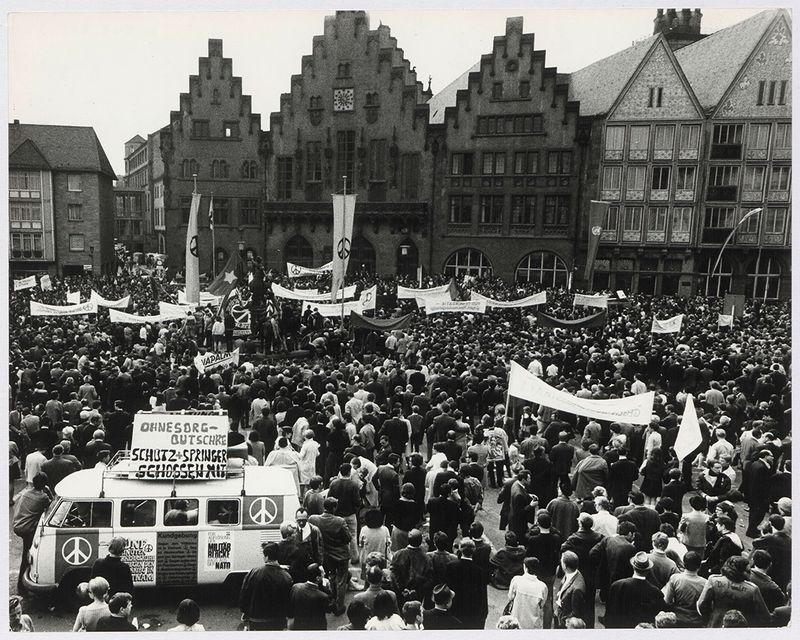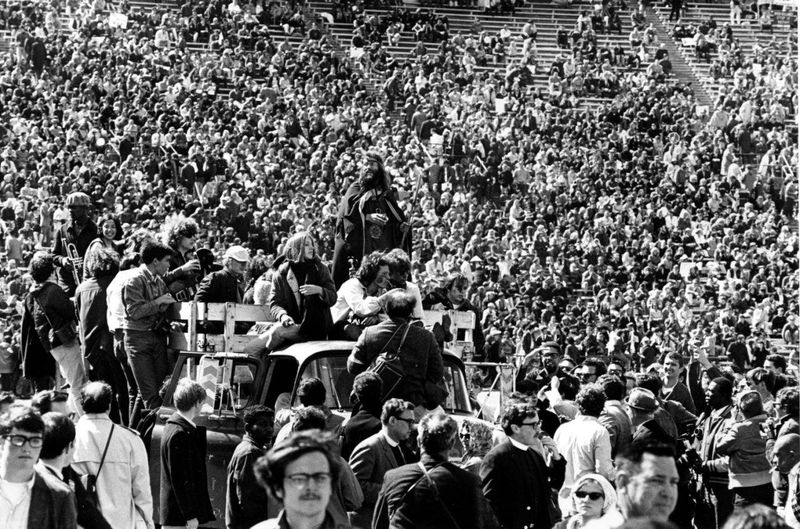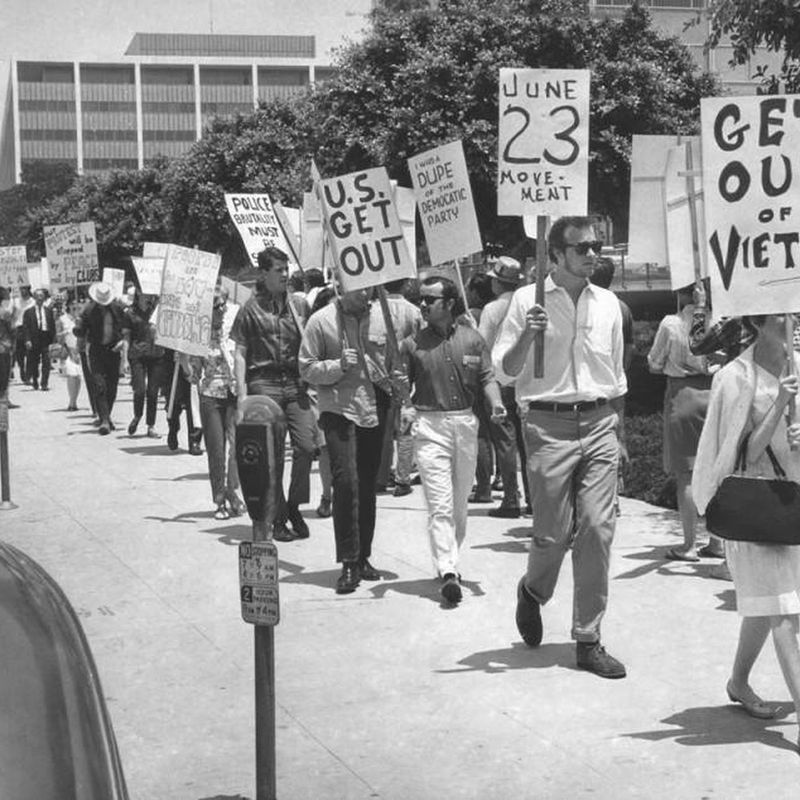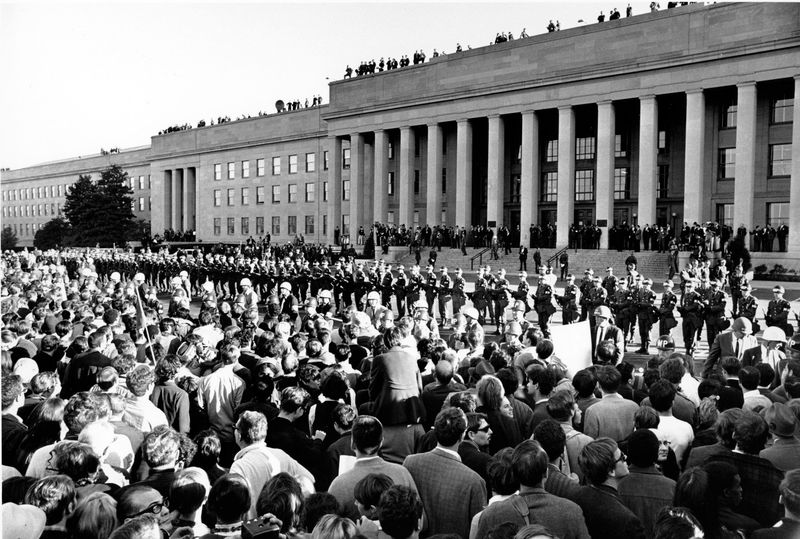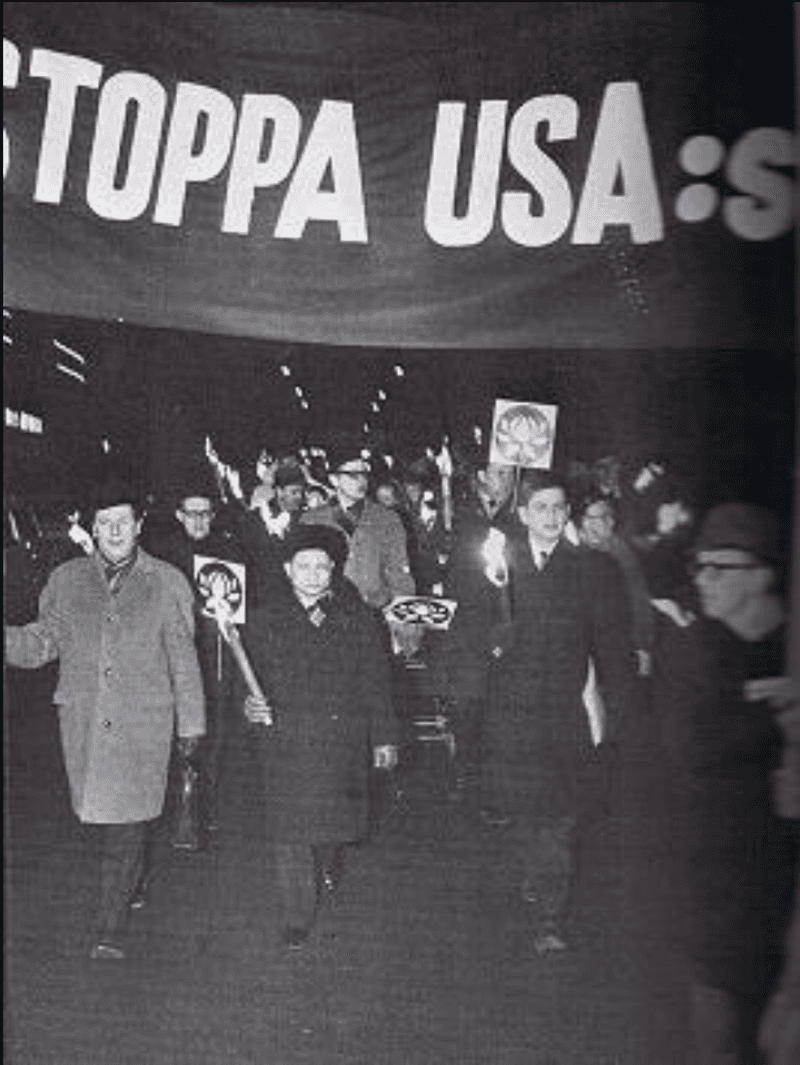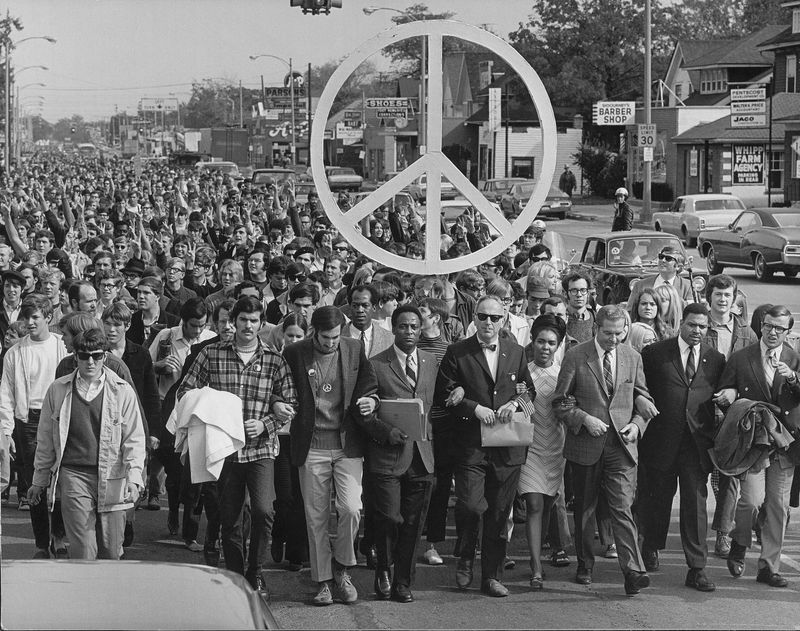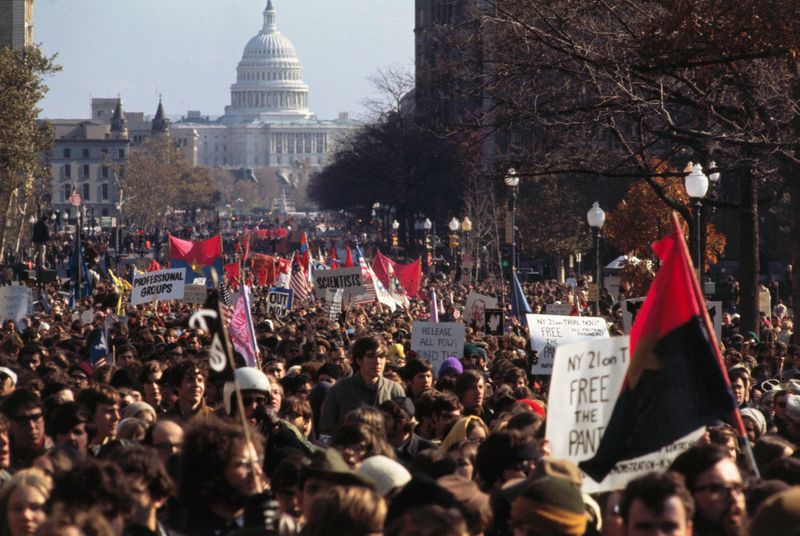The Vietnam War sparked widespread protests around the world, marking a significant era of activism against U.S. military involvement. From New York to Stockholm, these demonstrations highlighted global disapproval and solidarity. This article explores ten key protests that significantly impacted public opinion and policy during the conflict.
1. September 21, 1963 – War Resisters League demonstration at the U.S. Mission to the UN, New York City
Amidst the bustling streets of New York City, the War Resisters League organized what is often regarded as the first U.S. protest explicitly targeting the Vietnam conflict. This demonstration, held on September 21, 1963, focused on opposing U.S. support for what they termed “anti-Buddhist terrorism” in South Vietnam. Protesters gathered at the U.S. Mission to the United Nations, wielding signs and chanting slogans that echoed through the city. This event marked the beginning of a broader movement, spotlighting the moral and ethical concerns surrounding U.S. foreign policy in Southeast Asia.
2. March 1964 – Anti-Vietnam-War rallies in England and Australia
In March 1964, peace groups in England and Australia coordinated a series of anti-Vietnam War rallies. This initiative marked the first organized opposition to the war outside North America. British and Australian activists took to the streets in unison, holding public meetings and street actions. These events drew significant participation, reflecting growing global unease about U.S. military actions in Vietnam. The rallies served as a catalyst for international solidarity, as people across continents united in their call for peace and justice.
3. April 17, 1965 – Students for a Democratic Society (SDS) march on Washington, D.C.
April 17, 1965, saw thousands of student activists, led by the Students for a Democratic Society (SDS), converge on Washington, D.C. This was one of the first major student-led demonstrations against the Vietnam War in the United States. With banners flying high and chants resonating, around 20,000 protesters demanded an immediate end to U.S. bombing in North Vietnam. The atmosphere was charged with youthful energy and optimism, as students sought to challenge the political status quo and advocate for peace.
4. March 27, 1965 – “Easter marchers” in Frankfurt, West Germany
On March 27, 1965, Frankfurt became a stage for one of the most notable anti-war protests in West Germany. Known as the “Easter marchers,” approximately 450 activists participated in a creative demonstration against U.S. military escalation. They distributed leaflets to soldiers and performed street theatre, vividly illustrating the human cost of the Vietnam War. This protest highlighted European discontent and brought attention to the broader implications of the conflict.
5. April 15, 1967 – Nationwide mass demonstrations in New York, San Francisco, and beyond
April 15, 1967, witnessed a massive wave of anti-Vietnam War demonstrations across the United States. From New York to San Francisco, over 100,000 people took to the streets, engaging in acts of civil disobedience such as burning draft cards. Central Park became a focal point, with thousands gathering to voice their opposition to the war. This nationwide protest captured media attention and reflected the growing anti-war sentiment permeating American society.
6. June 23, 1967 – First large-scale anti-war protest in Los Angeles
June 23, 1967, marked Los Angeles’s entry into large-scale anti-war activism. Over 10,000 demonstrators gathered outside a White House fundraiser, facing off against 500 riot police. This protest signaled a shift towards more direct action on the West Coast. The diverse crowd, united in their opposition to the Vietnam War, underscored the widespread disillusionment with government policies. It was a pivotal moment that highlighted the power of peaceful protest in pushing for change.
7. October 21, 1967 – March on the Pentagon, Washington, D.C.
October 21, 1967, became etched in history as activists from across the U.S. gathered for the March on the Pentagon. Over 100,000 people participated, with around 50,000 advancing to the Pentagon’s walls, where clashes with military police ensued. This protest, organized by the National Mobilization Committee to End the War in Vietnam, was emblematic of the era’s fierce anti-war activism. It highlighted the movement’s escalation and the growing tension between protesters and authorities.
8. February 21, 1968 – Huge anti-war rally in Stockholm, Sweden
Sweden’s capital, Stockholm, became a hub of anti-Vietnam War sentiment on February 21, 1968. The Swedish Committee for Vietnam organized a massive rally, attracting tens of thousands of participants. Prime Minister Olof Palme shared the platform with a North Vietnamese delegate, symbolizing European solidarity with Vietnam. This protest was a landmark event, highlighting the global opposition to the war and showcasing Sweden’s leadership in advocating for peace and diplomacy.
9. October 15, 1969 – Nationwide Moratorium Day, United States
October 15, 1969, marked the largest single-day anti-war protest in U.S. history, known as Moratorium Day. An estimated two million Americans participated in various activities, from vigils and parades to teach-ins across the nation. Flags were flown at half-staff, symbolizing a collective mourning for the lives lost in Vietnam. This day underscored the widespread public disapproval of the war and demonstrated the power of organized, peaceful protest in shaping public discourse.
10. November 15, 1969 – Moratorium march on Washington, D.C.
On November 15, 1969, half a million protesters converged on Washington, D.C., for the Moratorium march, marking the peak of the anti-Vietnam War movement in the U.S. The sheer size of the demonstration effectively shut down downtown D.C., forcing the government to address the growing dissent. This event, one of the largest in U.S. history, was a powerful testament to the anti-war movement’s impact and its ability to mobilize and unify people across the nation.

